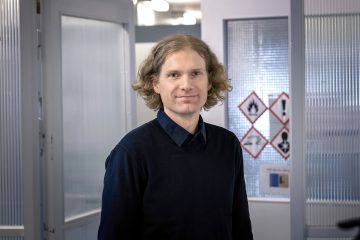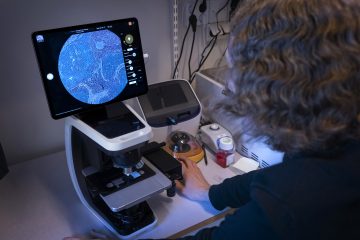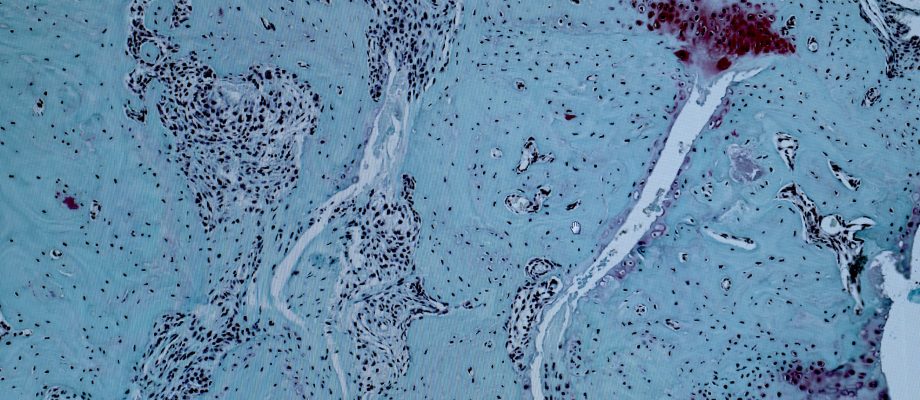GRANTS. Treatment options for rheumatoid arthritis have come a long way in recent years, but 30 to 40 percent of people with the disease do not respond to modern treatments. A grant of SEK 3.4 million from the IngaBritt and Arne Lundberg Research Foundation is now supporting research aimed at developing more precise pharmaceuticals. The money will be used for new technologies to prepare tissue samples that can be used by many researchers and that can optimize the benefits of existing microscopy.
Rheumatoid arthritis is an autoimmune disease, which means that the immune system mistakenly attacks healthy cells in the body. It breaks down bones and cartilage, resulting in chronic inflammation. The disease causes pain, stiffness, and fatigue. It affects about one percent of the population and is three times more common in women than in men. Most people with rheumatoid arthritis are between 50 and 70 years old. Though the cause of the disease is not fully understood, both heredity and environmental factors, such as smoking, play a role.
Rheumatoid arthritis is currently incurable. Treatment methods to alleviate the disease have evolved, and the pharmaceuticals used today produce better results than those available in previous decades. But they do not help everyone; 30 to 40 percent of patients do not respond to current medication. This underscores the need for new treatments.
Connective tissue cells destroy cartilage

Mattias Svensson, a researcher at the Department of Rheumatology and Inflammation at the University of Gothenburg, has been researching rheumatoid arthritis since he started as a doctoral student in 2009.
He looks at how the immune system communicates with the tissue cells inside the joint capsule. There is a thin membrane of connective tissue cells called joint fibroblasts inside the joint capsule. They produce nutrients for the cartilage to grow, which is important for joint health. In patients with rheumatoid arthritis, something happens to the fibroblasts that causes them to behave like tumors. They increase in number, grow into the joint cavity, and contribute to the destruction of cartilage.
“We are trying to find ways to reduce fibroblast growth. We know that the immune system plays a role, that it contributes to unwanted cell growth rather than slowing it down. But we do not yet know what makes the immune system act in this way,” says Mattias Svensson.
More targeted treatments
Svensson has previously been able to show that a certain type of immune cells increases in rheumatoid arthritis. The cells produce a growth factor that probably causes fibroblasts to start growing in the unwanted way.

He is now taking a closer look at that growth factor and hoping to develop more precise treatments than those available today.
“No treatment targeting connective tissue cells is yet available. That is what we want to develop, a new treatment method. Current treatments have a rather broad target, mainly by counteracting inflammation. We are focusing on learning more about what actually happens in the joints in rheumatoid arthritis. We hope to develop a more targeted treatment that works either by inhibiting the immune cell’s production of the growth factor or by stopping the signal that the immune cell sends to the fibroblast,” explains Svensson.
Quality along the entire chain
The research team’s lab is well equipped with modern and advanced microscopes. But before Mattias Svensson and his research team receive the tissue samples that they will study under the microscope, the samples must be prepared, which also requires special equipment. A grant of SEK 3.4 million from the Lundberg Research Foundation will be used to acquire equipment for tissue preparation.
“It is easy to focus on the amazing microscopes, but to make optimal use of them, you also need really good equipment for preparing the cell samples. Now, with the grant from the Lundberg Research Foundation, we can obtain the very best and create a system with consistently high performance and, equally important, that is very user-friendly. We want to create a workflow that enable many people to use the equipment. This will pay off in the form of higher quality cell samples studied under the microscope and new discoveries.
BY: LUNDBERG RESEARCH FOUNDATION
PHOTO: MAGNUS GOTANDER











